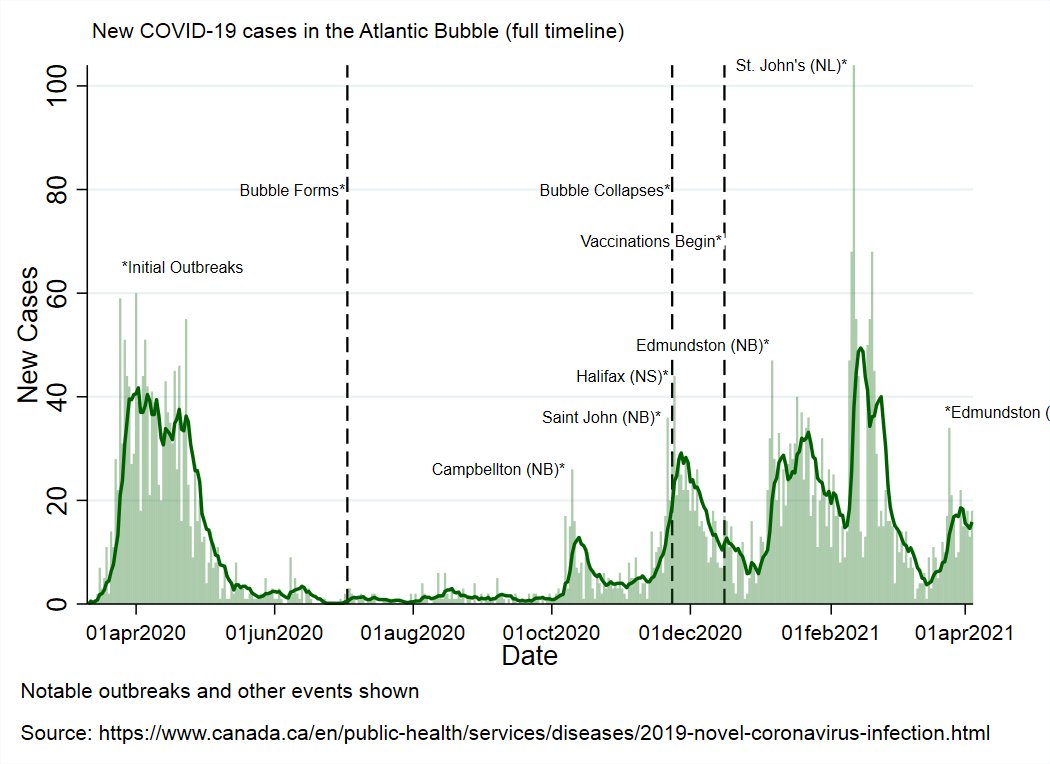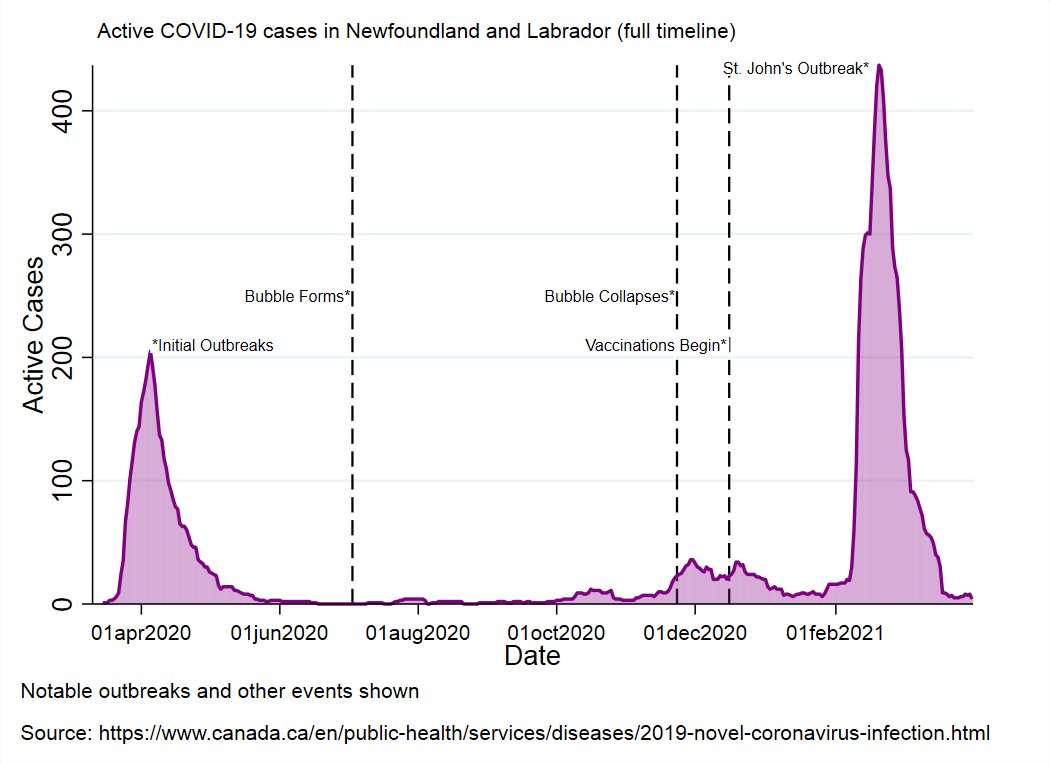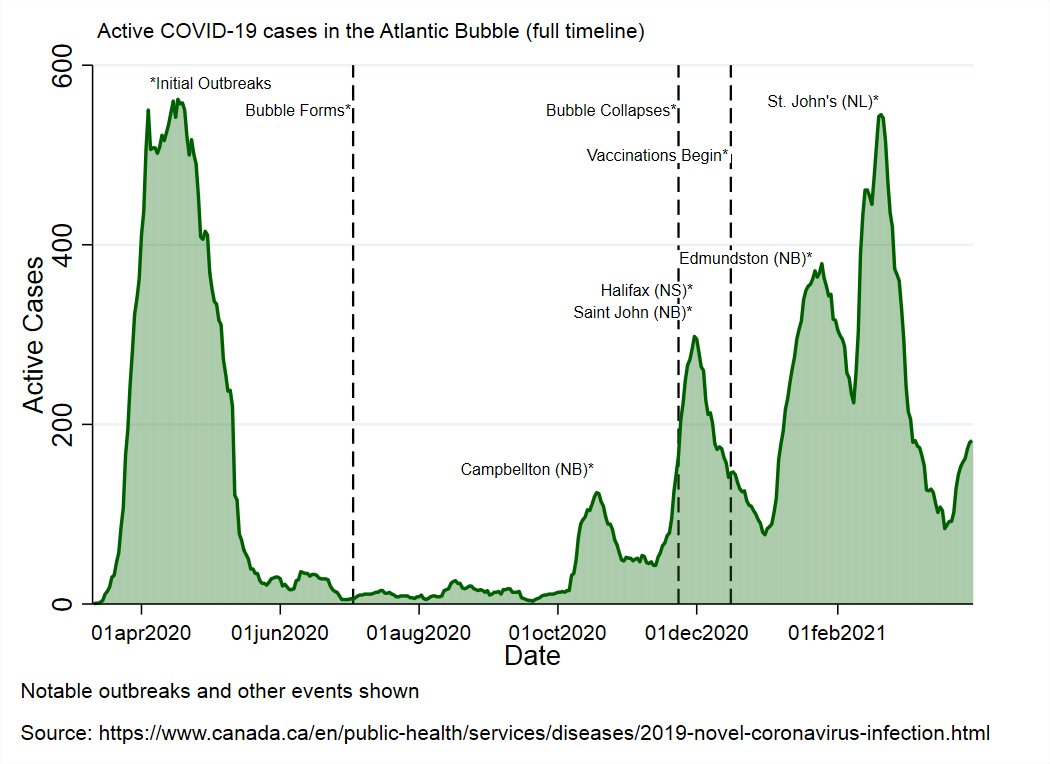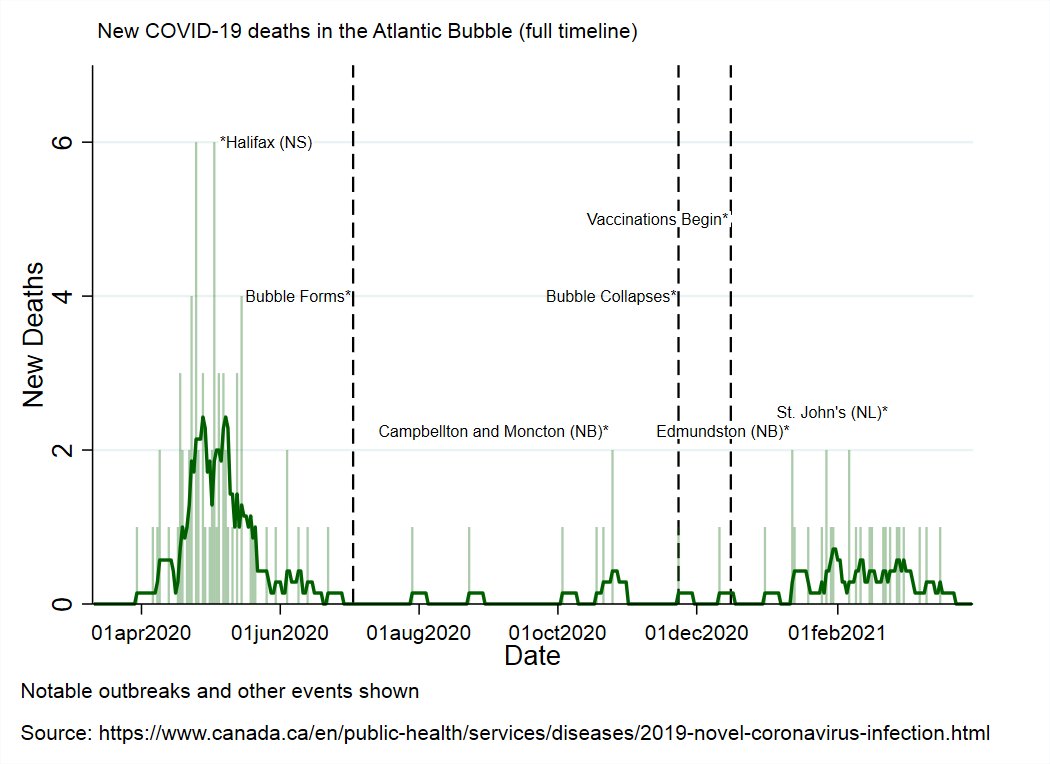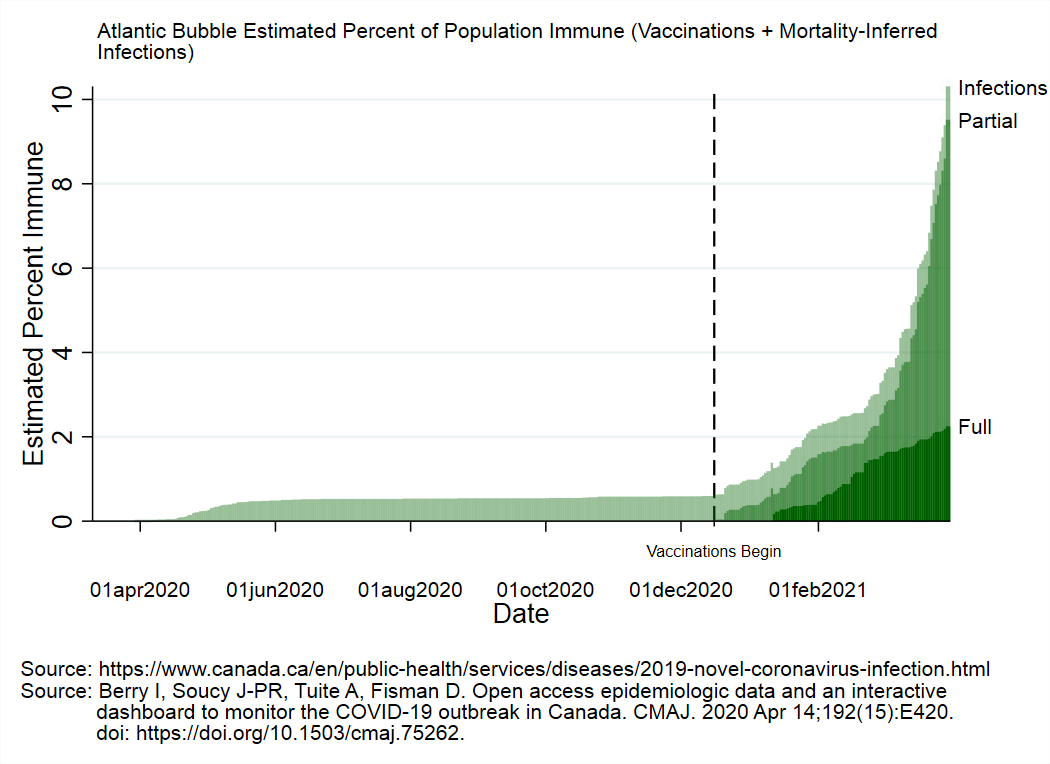
The Great Big Canadian Pandemic Summary Thread (as promised)
Some of us are heading into a 3rd wave of the pandemic, so I though a recap of where we've all been might be worthwhile.
The first part is going to summarize each province at the health-region level...
Some of us are heading into a 3rd wave of the pandemic, so I though a recap of where we've all been might be worthwhile.
The first part is going to summarize each province at the health-region level...
For all the graphs, I have the national range in the background in grey: the bottom is the lowest per capita rate by any health region and the top is the highest per capita rate.
So everything will be visible on the same scale.
Examples:

So everything will be visible on the same scale.
Examples:
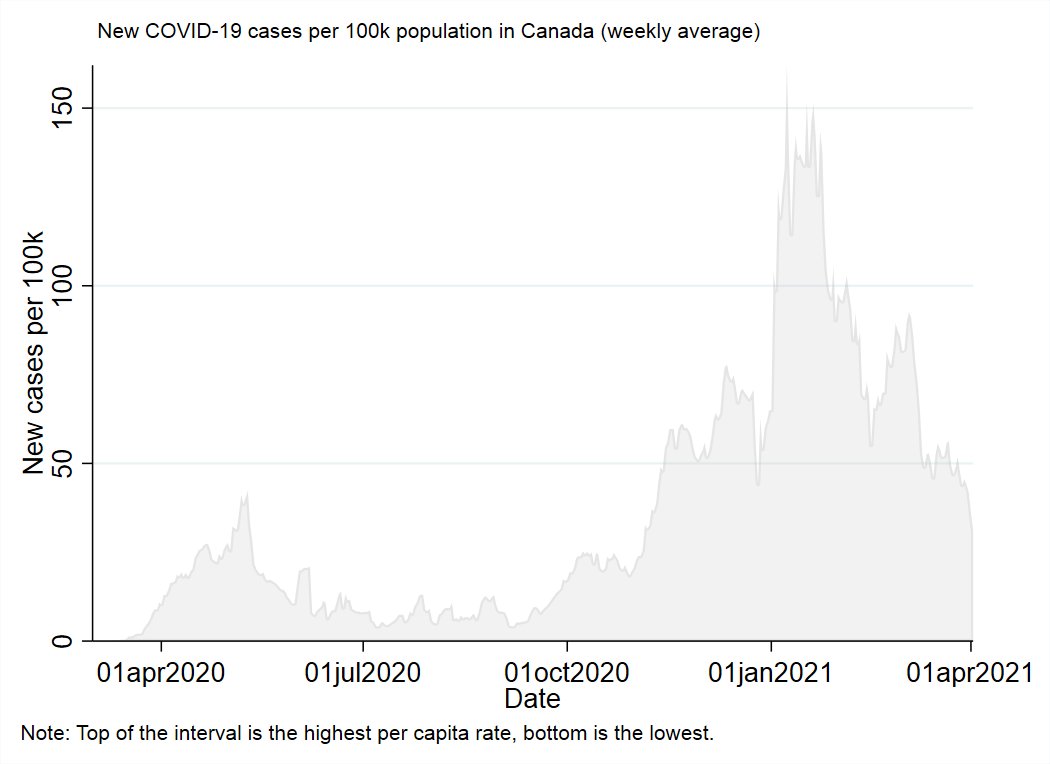

For the cumulative graphs, I've tinkered with the size of the lines so that health regions that make up a larger share of their province's population will be larger/more prominent, although not quite to scale.
The 2nd part will look at how much population matters in a pandemic.
The 2nd part will look at how much population matters in a pandemic.
BC
The top of the shaded bands show the range of the lowest and highest rate health regions on each day, and the black line is the overall provincial rate.
BC has a pretty narrow band in general. Fraser has highest cases and deaths. Vancouver Island is doing awesome so far.



The top of the shaded bands show the range of the lowest and highest rate health regions on each day, and the black line is the overall provincial rate.
BC has a pretty narrow band in general. Fraser has highest cases and deaths. Vancouver Island is doing awesome so far.


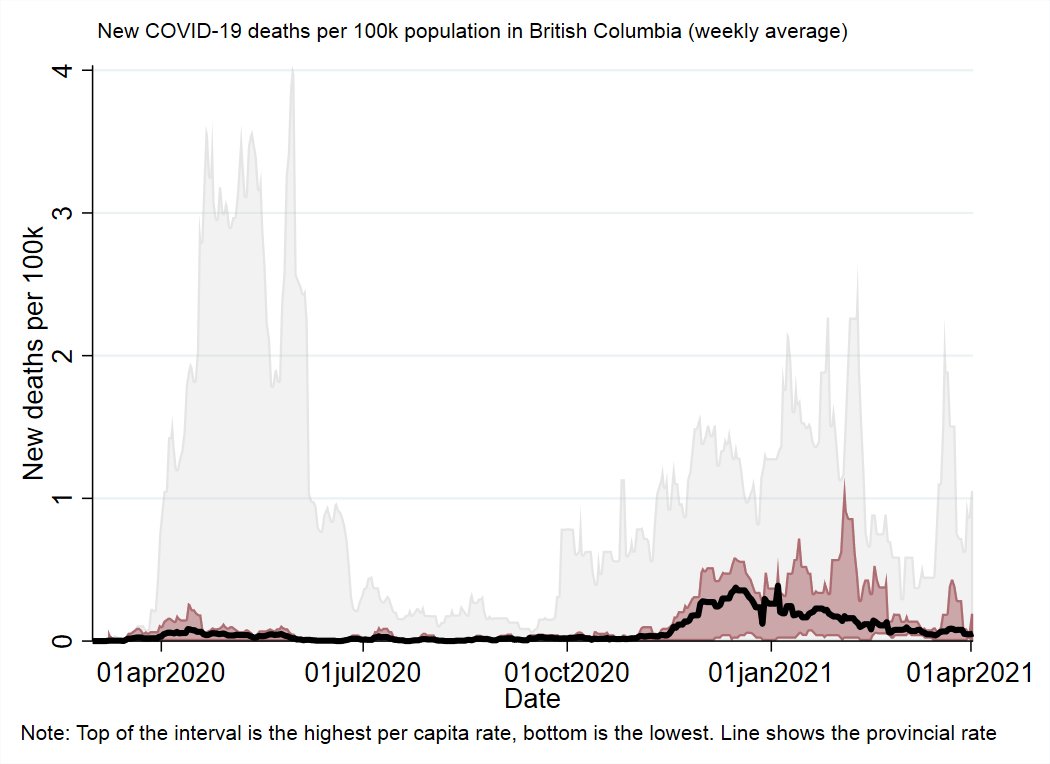

In general BC's higher population health regions have been hit harder, but it's a pretty narrow band compared to what you'll see in some other provinces.
Alberta
Likewise has a pretty narrow range: health regions tend to go up and down in terms of cases/deaths together, with higher population areas being hit a bit harder.
Edmonton stands out as having been hit particularly hard, but the province is still tightly clustered.



Likewise has a pretty narrow range: health regions tend to go up and down in terms of cases/deaths together, with higher population areas being hit a bit harder.
Edmonton stands out as having been hit particularly hard, but the province is still tightly clustered.

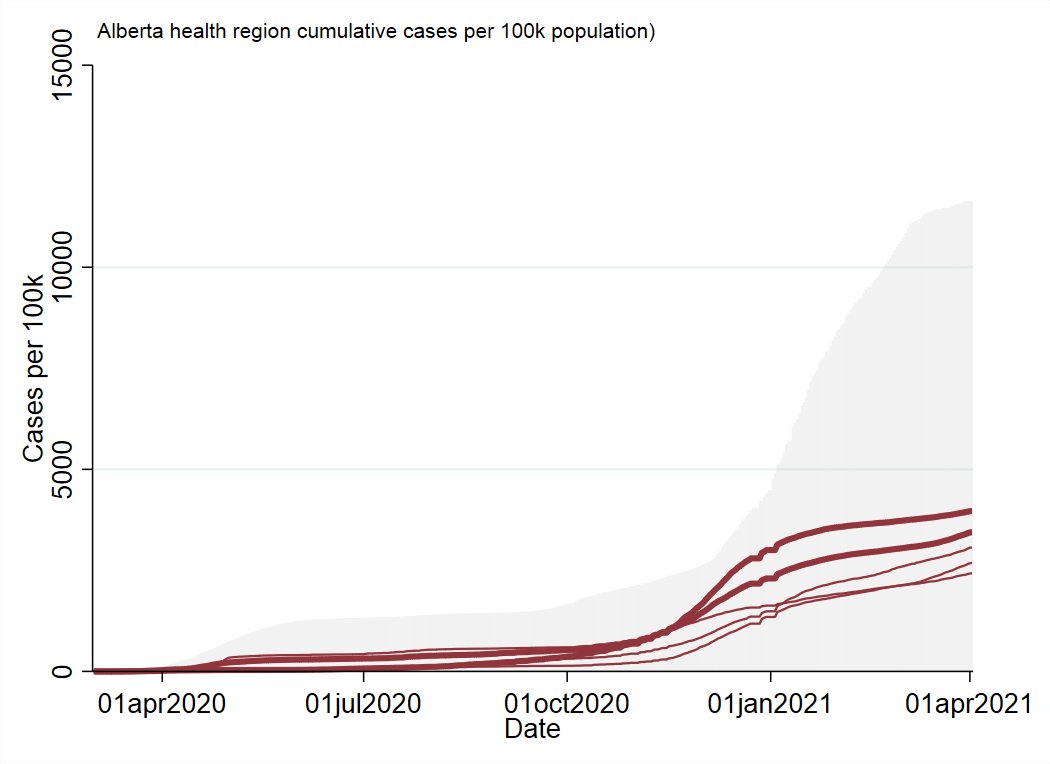


Manitoba
Basically untouched during the first wave, the 2nd wave was extremely rough.
Manitoba basically had two separate 2nd waves: one very lethal one in Winnipeg and the South along the US border, and then a 2nd ongoing one in the North (somewhat less lethal - still lethal)



Basically untouched during the first wave, the 2nd wave was extremely rough.
Manitoba basically had two separate 2nd waves: one very lethal one in Winnipeg and the South along the US border, and then a 2nd ongoing one in the North (somewhat less lethal - still lethal)




You can tell the difference between the two 2nd waves from the case timeline: in the Winnipeg/South wave, the provincial line goes up because the higher-population regions are involved; in the Northern wave, the interval goes up, but the provincial average goes down.
Saskatchewan
Much the same as MB: untouched in the first wave and then hit hard in the 2nd.
SK is a bit different as its cases and deaths skew much more towards the rural north, with less involvement of the more populated health regions.



Much the same as MB: untouched in the first wave and then hit hard in the 2nd.
SK is a bit different as its cases and deaths skew much more towards the rural north, with less involvement of the more populated health regions.




People don't talk about it much but the 2nd wave in Saskatchewan's Far North health region is actually the biggest in per capita terms in the country by a mile.
Ontario
Much better case detection in the 2nd wave, if we use deaths as a baseline for infections.
You can see some neat deviations in the case timeline that would normally be obscured in the provincial trend: lower population regions increasing before the 2nd/3rd waves peak.



Much better case detection in the 2nd wave, if we use deaths as a baseline for infections.
You can see some neat deviations in the case timeline that would normally be obscured in the provincial trend: lower population regions increasing before the 2nd/3rd waves peak.

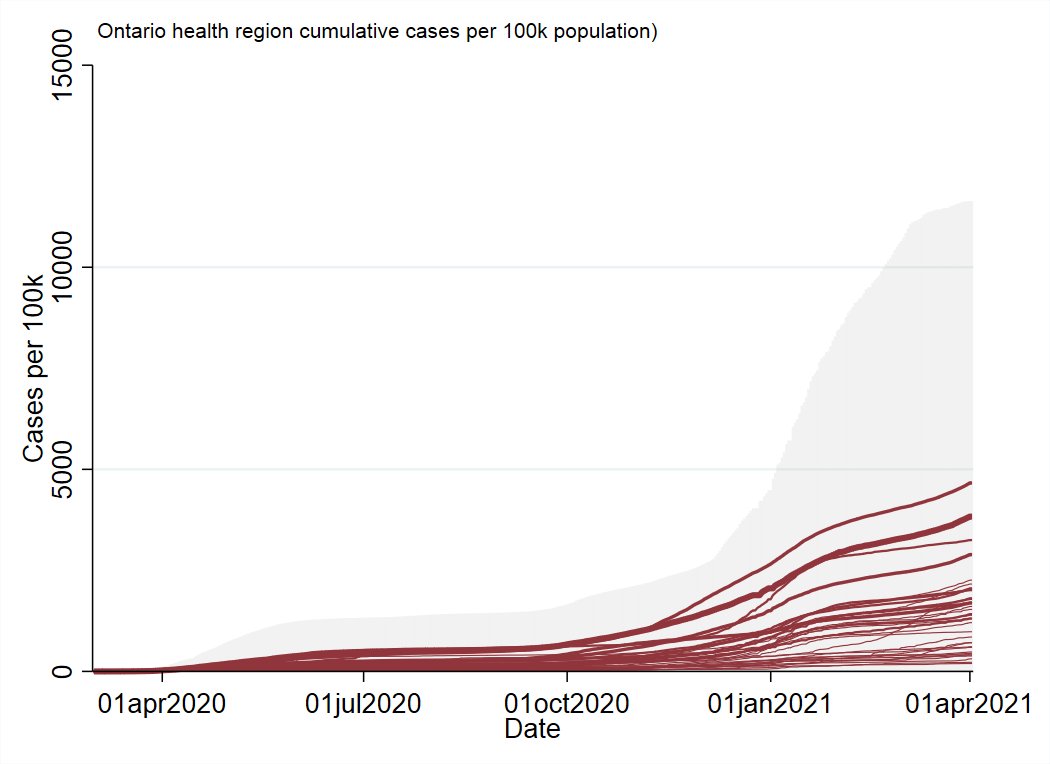


Ontario is a bit of a mixed bag: the health regions all tend to go up together, but the larger population centers definitely swing to higher case and morality levels.
More easily visible in the cumulative charts.
More easily visible in the cumulative charts.
Quebec
Ok, so Quebec is Canada's hardest hit province and it's not even close. This is driven primarily by Montreal and Laval health regions, which immediately neighbour each other.
The 1st wave in QC was very intense and localized, the 2nd was more widespread, like Ontario.



Ok, so Quebec is Canada's hardest hit province and it's not even close. This is driven primarily by Montreal and Laval health regions, which immediately neighbour each other.
The 1st wave in QC was very intense and localized, the 2nd was more widespread, like Ontario.




Interesting large peak in a lower-population region just before the peak of the 2nd wave for the province as a whole.
New Brunswick
Outbreaks in NB have so far been (mostly) confined to the more rural health regions along the borders with Quebec and Maine (see the shaded region go up but the provincial line barely move).
Outbreaks are usually moderate in scale and resolve after 3-6 weeks.



Outbreaks in NB have so far been (mostly) confined to the more rural health regions along the borders with Quebec and Maine (see the shaded region go up but the provincial line barely move).
Outbreaks are usually moderate in scale and resolve after 3-6 weeks.




The Edmundston outbreak (just after New Years) was notably quite severe in per capita terms. This one outbreak accounted for the majority of the province's deaths so far.
Note the lack of any coherent 'wave' pattern in the province. More localized outbreaks than waves.
Note the lack of any coherent 'wave' pattern in the province. More localized outbreaks than waves.
Nova Scotia
Almost all of the province's cases and deaths have happened in Halifax area and most of that was in first wave, and to a lesser degree during a smaller outbreak in late November that didn't result in any deaths.
Otherwise a very quiet province.



Almost all of the province's cases and deaths have happened in Halifax area and most of that was in first wave, and to a lesser degree during a smaller outbreak in late November that didn't result in any deaths.
Otherwise a very quiet province.




PEI
Doesn't have health regions, so there's no interval.
There have been a couple of clusters of usually under a dozen people that resolve in 1-2 weeks.
PEI actually hasn't suffered a death so far in the pandemic.
The quietest province of all, which we're all happy for.

Doesn't have health regions, so there's no interval.
There have been a couple of clusters of usually under a dozen people that resolve in 1-2 weeks.
PEI actually hasn't suffered a death so far in the pandemic.
The quietest province of all, which we're all happy for.


Newfoundland and Labrador
Very much mirrors NS (virtually all cases being in the St. John's area, really only 2 large outbreak events).
NL's 2nd outbreak happened a bit later (February vs November) and was much, much larger than the first.
But it resolved after about a month.



Very much mirrors NS (virtually all cases being in the St. John's area, really only 2 large outbreak events).
NL's 2nd outbreak happened a bit later (February vs November) and was much, much larger than the first.
But it resolved after about a month.




The Territories have likewise generally been pretty quiet, especially the Northwest Territories and Yukon.
Hardly even anything you'd call an outbreak. With a large share of the population getting vaccinated, things are looking good.



Hardly even anything you'd call an outbreak. With a large share of the population getting vaccinated, things are looking good.




Nunavut has had some touch and go moments during the winter months in terms of cases, but they've never really lost control of the situation.
Things are looking good going forward.

Things are looking good going forward.


And I guess to cap off, here are some of the provinces that seem to be headed into a 3rd wave: BC, Alberta, Saskatchewan, Ontario. 







And Quebec to a lesser degree.
Manitoba's provincial trend looks good, but their outbreaks in the north are, uh... worrying.
Atlantic and Territories don't generally have circulating virus, so "waves" in other places just means increased risk from travelers.

Manitoba's provincial trend looks good, but their outbreaks in the north are, uh... worrying.
Atlantic and Territories don't generally have circulating virus, so "waves" in other places just means increased risk from travelers.


Ok, Part 2: Population and pandemic outcomes.
When there's a wave of cases, people tend to split into two camps:
1) All outcomes are determined 100% by policy
2) All outcomes are determined by things like population/geography and policy doesn't matter.
I think both are wrong.
When there's a wave of cases, people tend to split into two camps:
1) All outcomes are determined 100% by policy
2) All outcomes are determined by things like population/geography and policy doesn't matter.
I think both are wrong.
Probably the best example of the is the one I report on daily (and happen to live in): the Atlantic Bubble.
For those that don't know, Canada's Atlantic provinces (the 4 on the east coast) closed their borders early in the pandemic, requiring 14 days isolating for travelers.
For those that don't know, Canada's Atlantic provinces (the 4 on the east coast) closed their borders early in the pandemic, requiring 14 days isolating for travelers.
Aside for a few relatively small to medium scale outbreaks (see up-thread for context), the entire region has been free of community transmission for most of the last year.
Borders were opened between the provinces (but not the rest of the country) last July.
Borders were opened between the provinces (but not the rest of the country) last July.
The border restrictions went back up during some winter-time travel-related outbreaks, but are scheduled to come back down again in a couple of weeks.
Predictable, the Bubble has become something people like to Argue About on the Internet.
Predictable, the Bubble has become something people like to Argue About on the Internet.
The two points are usually something to the effect of...
1) Border restrictions seem hyper effective, more so than anything else, so other provinces should so that.
and
2) The Atlantic provinces are small (2.4M pop), it wouldn't work here*
*'here' is everywhere else basically
1) Border restrictions seem hyper effective, more so than anything else, so other provinces should so that.
and
2) The Atlantic provinces are small (2.4M pop), it wouldn't work here*
*'here' is everywhere else basically
Do health regions in Canada with more people actually have a harder time managing the pandemic?
Yes!
Here are cumulative cases and deaths per capita for each health region plotted again national share of the population (Atlantic in blue)
Unambiguous trend.

Yes!
Here are cumulative cases and deaths per capita for each health region plotted again national share of the population (Atlantic in blue)
Unambiguous trend.


But "does Atlantic Canada have lower population health regions" isn't the question, it's whether those regions have out-performed the size of the populations.
Here's each health region relative to the trendline for cases and deaths.
Above zero means having more cases/deaths than would be expected based on the population size of the health region.

Above zero means having more cases/deaths than would be expected based on the population size of the health region.


For both cases and deaths, Atlantic health regions are almost always the furthest below the trend line of what would be expected based on population size.
But what does that mean? Well to get the Atlantic health regions to the levels expected based on population, here how many more cases/deaths would be needed.
NB: +9314 cases, +146 deaths
NS: +13409 cases, + 224 deaths
NS: +6567 cases, +133 deaths
PEI: +1850 cases, +33 deaths
NB: +9314 cases, +146 deaths
NS: +13409 cases, + 224 deaths
NS: +6567 cases, +133 deaths
PEI: +1850 cases, +33 deaths
For the region as a whole, moving all of the constituent health regions to the level of cases/deaths expected based on their population, taking into effect the correlation between population and cases/deaths, means an additional 31,140 cases and 536 deaths based on the data.
But it's not just cases and deaths in relative terms, I think one of the big differences the Atlantic region has had is, for lack of a better phrase, the ability to relax and not make tradeoffs between lowering restrictions and increasing deaths.
One way to think of this how much time during the pandemic has a health region *not* had an active outbreak (I'll define this as a running average of <0.5 cases per 100k).
Is it harder for larger health regions to get to and stay at a non-outbreak state?
Yes, it looks like it is.
But are the Atlantic health regions better off than you would expect for their size?
Also yes.
By a lot. Of the 20 largest deviations from the trend, 14 are Atlantic.
Yes, it looks like it is.
But are the Atlantic health regions better off than you would expect for their size?
Also yes.
By a lot. Of the 20 largest deviations from the trend, 14 are Atlantic.

What does that mean in practice?
It means that in the last year each of the Atlantic provincial capitals got an extra 4 - 4.5 months of functionally zero COVID compared to what would be expected from cities the same size in the rest of the country.
That's a lot!
It means that in the last year each of the Atlantic provincial capitals got an extra 4 - 4.5 months of functionally zero COVID compared to what would be expected from cities the same size in the rest of the country.
That's a lot!
Put another way, Halifax (health region with nearly 500k population) has the same number of days not having outbreaks as you would expect from a health region with something like 25k population in the rest of the country.
You can even see it when cross plotting days outbreak free (vs expected from population) and deaths per capita (vs expected from population).
Half the upper left quadrant (fewer deaths, less time in an outbreak) is populated by just Atlantic health regions.
Half the upper left quadrant (fewer deaths, less time in an outbreak) is populated by just Atlantic health regions.

So the quick answer is that population matters for cases and deaths, but it's absolutely possible to buck that trend by acting quickly and aggressively, and using all the tools in the box.
Population shouldn't be used as an excuse for lower standards and poor outcomes.
Population shouldn't be used as an excuse for lower standards and poor outcomes.
Other notable health regions that stand-out:
Vancouver Island
BC Interior
Algoma (ON)
Northwest Territories
Nunavik (QC)
Ottawa (ON)
Vancouver Coastal (BC)
Kingston (ON)
Vancouver Island
BC Interior
Algoma (ON)
Northwest Territories
Nunavik (QC)
Ottawa (ON)
Vancouver Coastal (BC)
Kingston (ON)
Thanks for staying through the whole thread if you did so.
I hope it was informative!
I hope it was informative!
• • •
Missing some Tweet in this thread? You can try to
force a refresh


